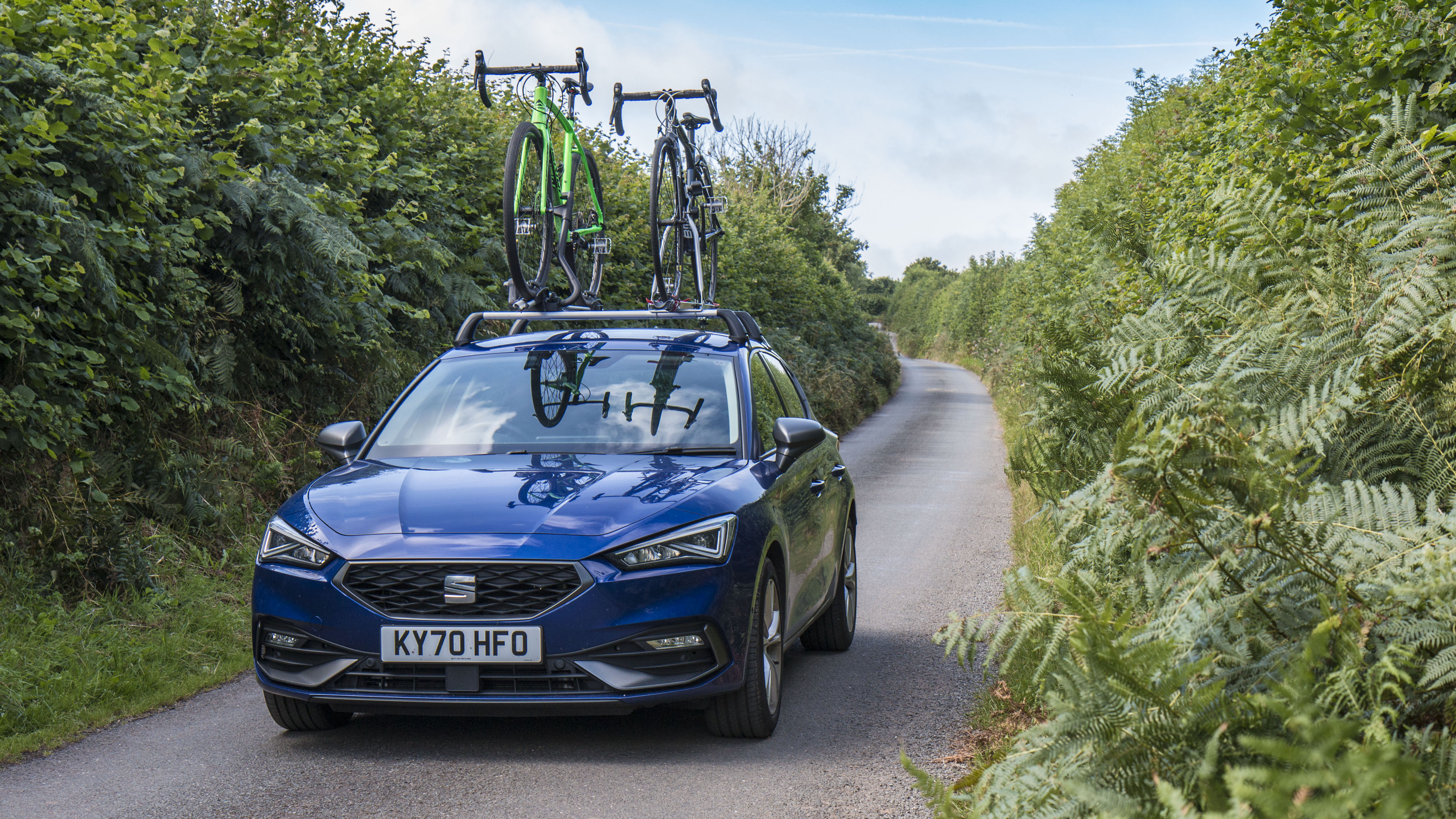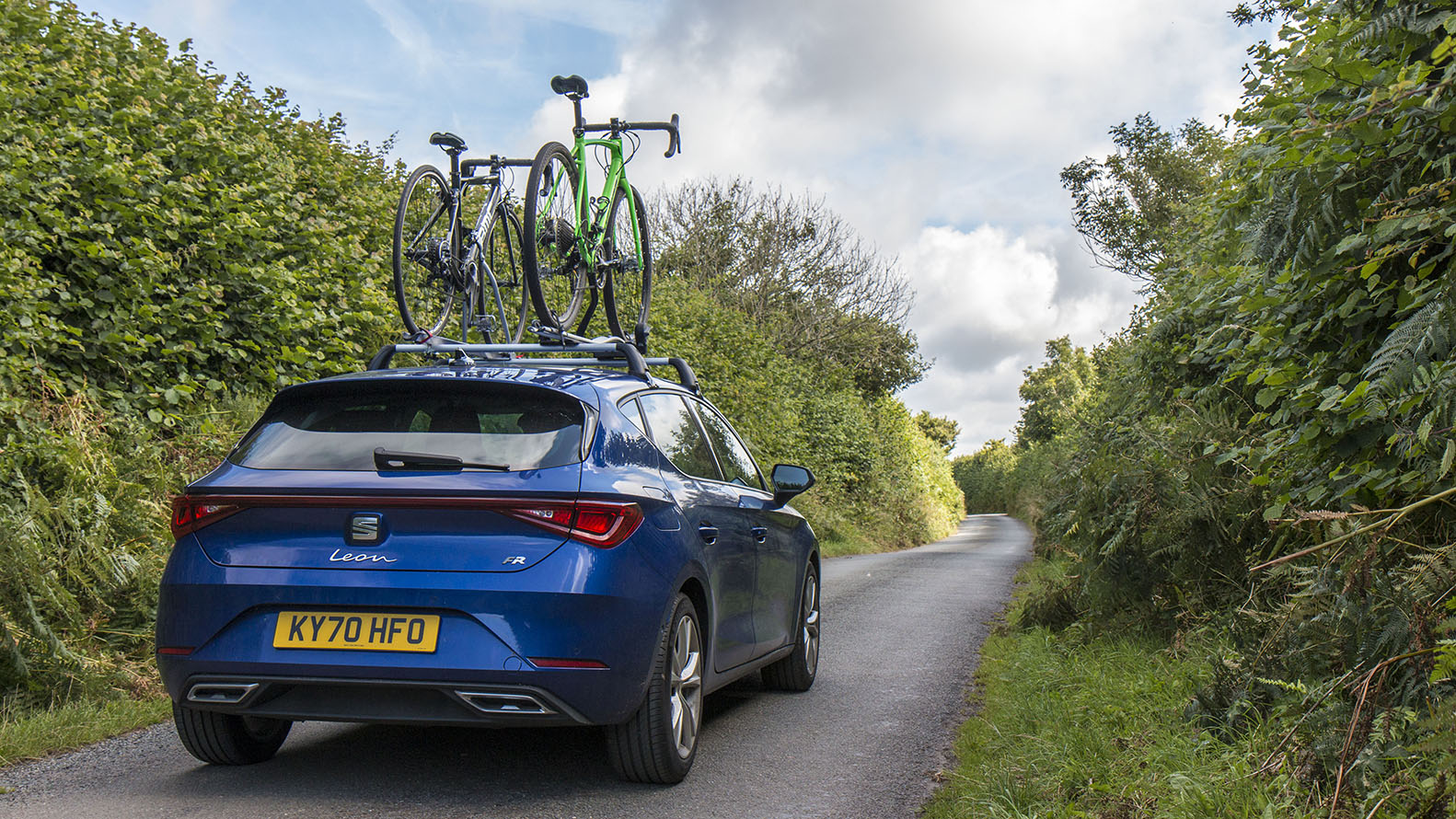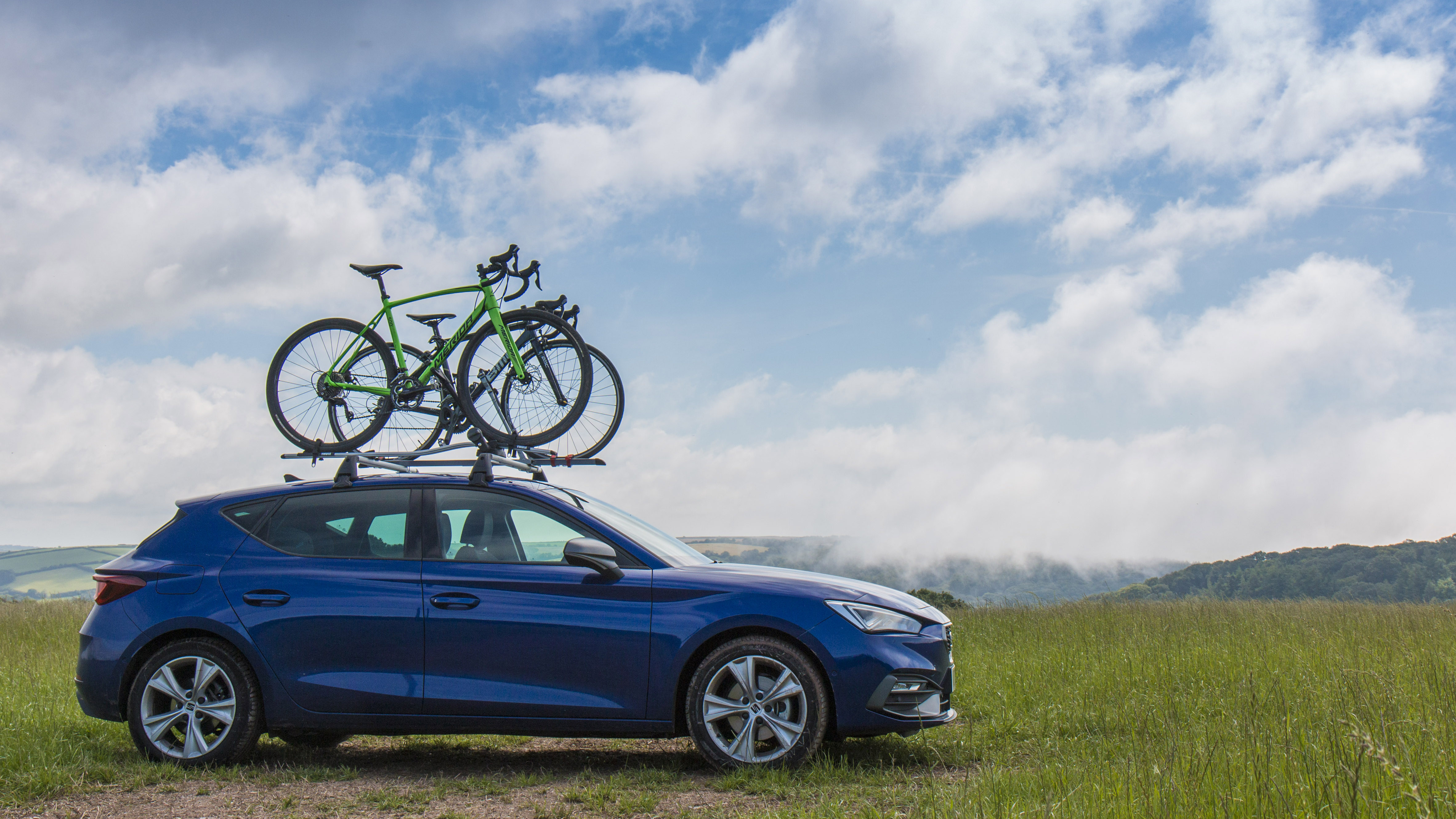
Seat Leon FR 1.0 eTSI – long-term review
£26,025 OTR / £26,025 as tested / £265pcm
SPEC HIGHLIGHTS
- SPEC
Leon FR 1.0 eTSI
- ENGINE
999cc
- BHP
110bhp
- 0-62
10.8s
Goodbye Seat Leon: we'd buy one, except...
With four humans and a couple of bikes to transport to the opposite side of the country during summer holiday time, that meant something had to go on the roof. And – after a brief discussion with my wife regarding the merits of al fresco child seats – it was agreed that something should be the bikes.
Which means… roof bars. Now, with no rails, tracks or fixed mounting points to be found on the Leon’s roof, I was intrigued – not to mention a little concerned – exactly how this would work. The official Leon roof bars (£210 from Seat) clamp into the door jams, which sounds a bit precarious on paper. But I’m happy to report that in practice they’re entirely robust, and unexpectedly easy to install, even if – like me – you boast the DIY skills of a yak. (Apparently Seat will fit them for you free of charge, but hey, where’s the jeopardy in that?)
At speed, there’s the tiniest whisper of extra wind noise around the door frames, but nothing intrusive. And, most importantly, at the end of the 350-mile slog, the bikes remain happily attached to the Leon rather than strewn all across the M4, which is really all you can ask for from a set of roof bars.
(Interestingly, by my calculations, the addition of the bars and a pair of fairly slender bikes cuts a whopping 10mpg from my average economy. That’s not a criticism of the Leon or indeed the roof bars, but I guess it shows how aerodynamically efficient modern cars are: add a modest spindle of metalwork to the top and it clearly murders the drag coefficient.)
The Leon proves itself a fine travelling companion: surprisingly capacious inside, and surprisingly willing to be off-roaded in order to reach a scenic lookout or some-such. (Who needs four-wheel drive and locking diffs when you’ve got (a) ill-placed confidence, and (b) offspring willing to push you out of a ditch?)
It’s a fine way to say goodbye to a car that has, in pretty much every regard but one, impressed during its time on Fleet Top Gear. Economy from the 1.0-litre three-cylinder was stellar (at least when not wearing bike-hat), material quality felt much improved on that of Leons past, and driving manners – while never sporty exactly – remained pleasingly crisp. Small on surprises, but big on competence.
However. The fly in the ointment is – yes you guessed it – that bloody infotainment system. I know every review of the new Leon/Golf/ID.3 etc says the same thing. And believe me, I’d love to be the contrarian who tells you it’s not that bad, and you’ll get used to it. But it is, and you don’t.
The interfaces are baffling, the responses are laggy, and the temperature slider thingies under the main display are – in my six months of trying, at least – broadly useless if you actually wish to change the temperature. Buttons! Buttons! My kingdom for a few chunky physical buttons!
I know it sounds a prissy thing to get so hung up on. But the info-screen is so central to how you interact with cars nowadays that such a recalcitrant set-up colours the overall impression to a huge degree. I suspect most of the issues could be sorted with a software upgrade, but for now, for me, it’s enough of an ointment-fly to put the Leon into the ‘shortlist’ rather than ‘must have’ category (alongside the Golf and its equally baffling screenery).
Come on, Seat. Sort out your infotainment, and you’re onto a winner here.
Featured

Trending this week
- Car Review
BMW 1 Series






